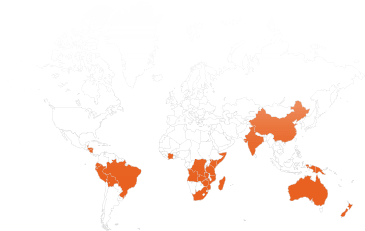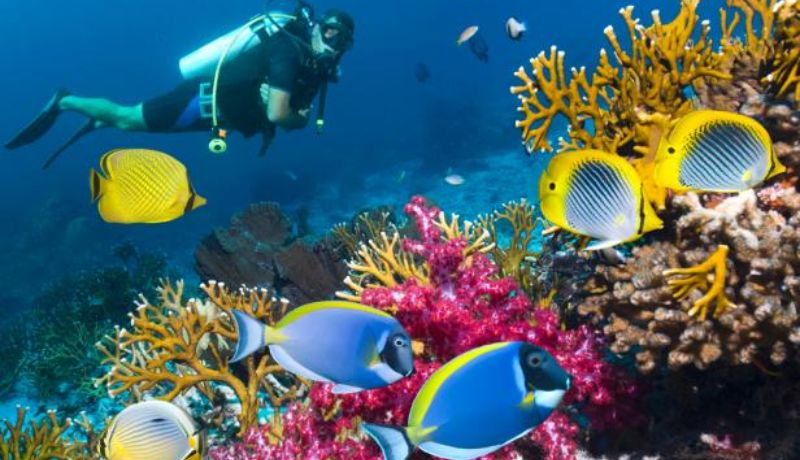Did you know that chemicals within sunscreen and personal health products are leading causes of the destruction of coral reefs? They can cause bleaching, coral DNA damage, abnormal skeletal growths, and deformities of baby coral. On average 14,000 tons of sunscreen slide off of humans and onto the world’s coral reefs each year, exposing these gorgeous underwater ecosystems to chemicals that kill them.
What are the causes of coral reef destruction?
Let’s get technical for a bit. Sunscreen is packed with chemical filters, containing a combination of oxybenzone, octinoxate, avobenzone, octisalate, octocrylene, and homosalate! These ingredients, including petroleum additives, are some of the chemicals you need to watch out for.
Oxybenzone, or BP-3, is found in more than 3,500 skin care products worldwide, and is one of the active ingredients in guess what? Sunscreen! This harmful chemical directly washes off of swimmers in the ocean, and is absorbed or settles on top of coral to cause the deformities mentioned above.
Benzophenone-2, or BP-2, found in soaps, cosmetics, and body fragrances is also just as damaging, especially to baby coral growth and development, causes bleaching as well as coral mutations. (The good news is that this chemical is that it is not an “approved chemical” for use in sunscreens produced in the United States).
What are the harmful ingredients in sunscreen?
Getting the best reef-safe sunscreen is so important! Scientists suggest using sunscreen with nontoxic oxybenzone alternatives, which is crucial in the protection of reefs. We can do this by researching MINERAL BASED sun protectants! While a brand may deem their product “reef safe,” it isn’t always the case. Be sure to check the entire list of ingredients, active and inactive.
Sunscreens made with zinc oxide and titanium dioxide are mineral-based, so rather than being absorbed like traditional sunscreen, the particles of these ingredients sit on top of the skin and block harmful UV rays. These ingredients are less harmful to corals and are not linked to coral bleaching. Some of the best recommended Reef Safe sunscreens can be found at local stores and online.
Keep an eye out for:
- Badger SPF 30 Unscented Sunscreen Cream
- Stream2Sea SPF 30 Mineral Sunblock
- Thinksport SPF 50 Sunscreen
- All Good SPF 30 Sport Sunscreen Lotion
- Coral Safe All Natural Biodegradable Sunscreen
- Sun Bum Reef Friendly Ingredients Sunscreen
- Babo Botanicals SPF 30 Clear Zinc Lotion
- Raw Elements SPF 30 Certified Natural Sunscreen
- Tropical Sands Biodegradable Mineral Sunscreen
Make sure to choose a reef safe sunscreen that contains ingredients that are “non-nano,” meaning the ingredient particles must be above 100 nanometers in size so that they cannot be ingested by corals.
What is the best Sun Protecting Clothing?
Look for UPF-rated clothing in the form of swimsuits, rash guards, shirts, socks, leggings, pants, buffs, and hats! By covering up, you can reduce the surface area needed to apply reef safe sunscreen and avoid sunburns all together! Plus they help with avoiding irritations caused by friction from scuba and snorkel gear.
How to Rinse Off Properly?
Before heading out on boats or to the beach, hop under the shower head for a quick rinse. This will wash away any soap, balms, fragrance, and residue left behind from products that contain harmful ingredients.
When packing your suitcase for one of our many marine conservation adventures, keep an eye on your products and their ingredients. Some may surprise you with their hidden chemicals, especially in lip balms and soaps!
Products containing oxybenzone, octinoxate, avobenzone, octisalate, octocrylene, and homosalate will no longer be allowed at our project sites. Remember to look for non-nano mineral based products!


Recent comments